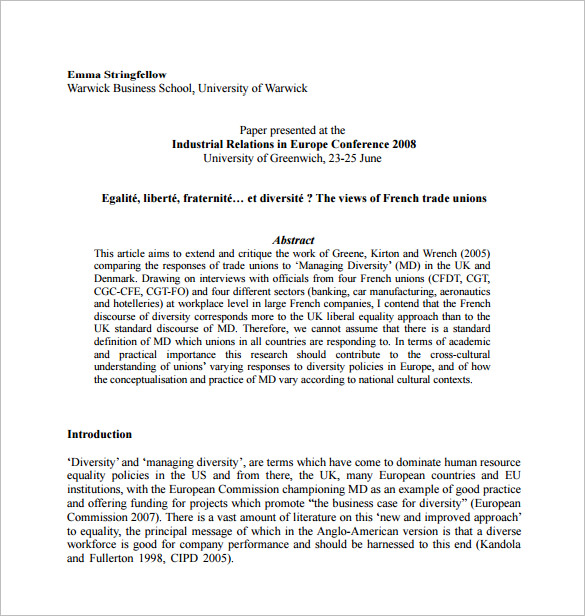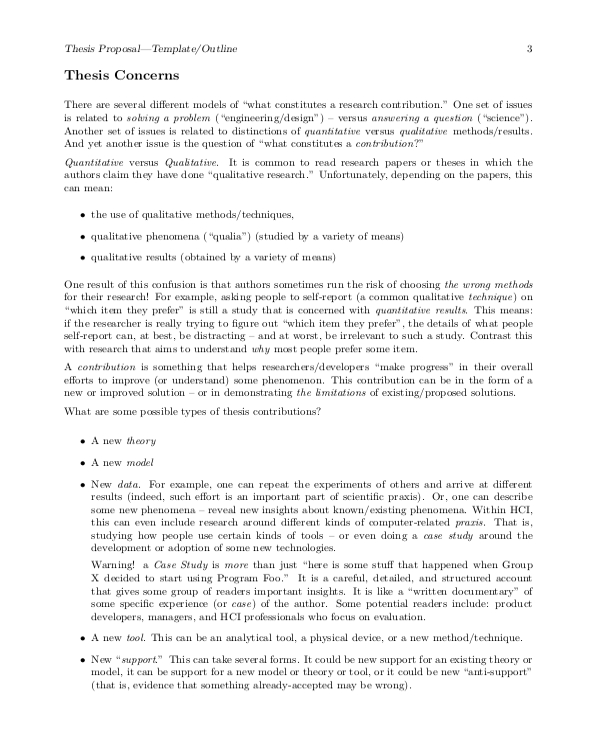
0. Check your Requirements (margins, etc) and Plan Your Work
Use “leading dots”: set a tab stop and under Leader choose option #2. Do not attempt to line things up by pressing the tab key repeatedly. Set a tab stop where you want it. Don’t type your Table of Contents yourself. Word can create a Table of Contents based on the Heading styles 8 rows · Format a Thesis or Dissertation in Microsoft Word Our thesis formatting tutorial takes you step-by-step through the process of formatting your thesis from our template file. For more information on how to format and edit your manuscript, see our Thesis & Dissertation Formatting General Advice page Your topic, your advisor, and your committee: making them work for you Managing your topic Keep your advisor informed. Advisors can be most helpful if they know what you are working on, what problems you are experiencing, and what progress you have made. A weekly, bi-weekly, or monthly meeting or progress report can prove helpful. Mosan Cameron
Contact Info
The very first step is to check the practical requirements of your educational programme. This determines the scope of what it is possible for you to research. Start by thinking about your areas of interest within the subject you’re studying. Examples of broad ideas include Drafting and rewriting This may mean putting into practice professional and ethical guidelines when collecting data from members of the public. Planning your dissertation Non-empirical dissertations are based on existing data and arguments in the work of others. Planning for length The abstract is a short summary of your dissertation, usually about – words long. You should write it at the very end, when you’ve completed the rest of the dissertation. In the abstract, make sure to: State the main topic and aims of your research Describe the methods you used Summarize the main results State your conclusions

Table of contents
Drafting and rewriting This may mean putting into practice professional and ethical guidelines when collecting data from members of the public. Planning your dissertation Non-empirical dissertations are based on existing data and arguments in the work of others. Planning for length Your topic, your advisor, and your committee: making them work for you Managing your topic Keep your advisor informed. Advisors can be most helpful if they know what you are working on, what problems you are experiencing, and what progress you have made. A weekly, bi-weekly, or monthly meeting or progress report can prove helpful. Mosan Cameron In this day and age, nobody has the time to write a 10,word dissertation. It takes time, patience, research, and persistence to write such a blogger.com would be nice if everyone had all those talents. However, most of us aren’t natural-born writers and it’s an excruciating task for us to write a cohesive piece in little time

Search Google Appliance
The very first step is to check the practical requirements of your educational programme. This determines the scope of what it is possible for you to research. Start by thinking about your areas of interest within the subject you’re studying. Examples of broad ideas include The abstract is a short summary of your dissertation, usually about – words long. You should write it at the very end, when you’ve completed the rest of the dissertation. In the abstract, make sure to: State the main topic and aims of your research Describe the methods you used Summarize the main results State your conclusions 8 rows · Format a Thesis or Dissertation in Microsoft Word Our thesis formatting tutorial takes you step-by-step through the process of formatting your thesis from our template file. For more information on how to format and edit your manuscript, see our Thesis & Dissertation Formatting General Advice page

Introduction to Word for Dissertation
Drafting and rewriting This may mean putting into practice professional and ethical guidelines when collecting data from members of the public. Planning your dissertation Non-empirical dissertations are based on existing data and arguments in the work of others. Planning for length The abstract is a short summary of your dissertation, usually about – words long. You should write it at the very end, when you’ve completed the rest of the dissertation. In the abstract, make sure to: State the main topic and aims of your research Describe the methods you used Summarize the main results State your conclusions 23/05/ · Use styles to control the formatting of your dissertation and create a template (or download ours) to use for all of your chapters. The bulk of this document revolves around the use of styles. Set the margins including the two-inch margin for chapters titles (Setting Margins).Author: ScholarSpace
No comments:
Post a Comment